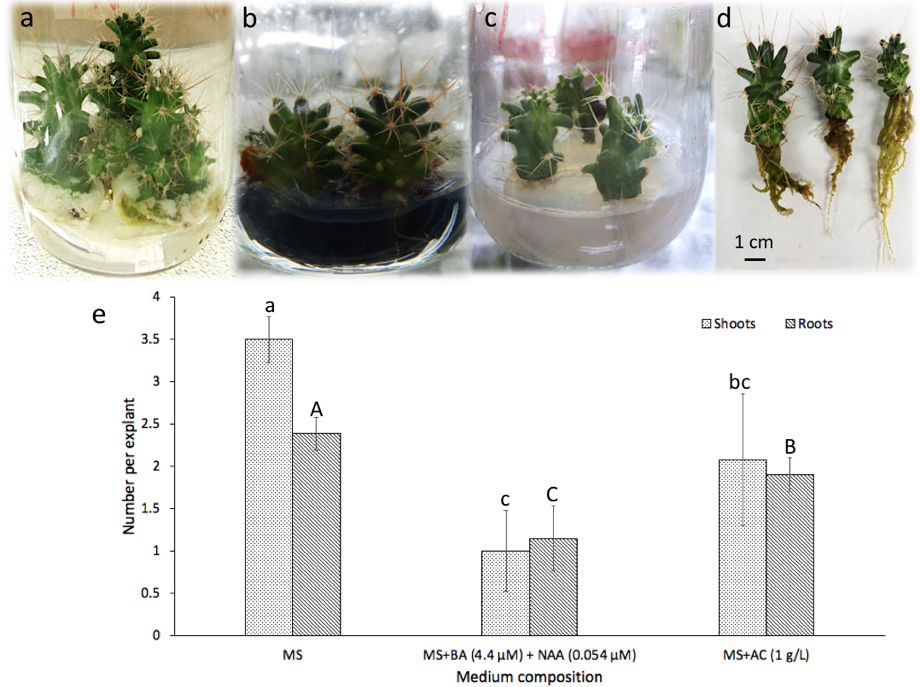 |
|
In the last years, the demand for natural products has increased. Different cacti species has demonstrated to be a source for the biosynthesis of functional compounds, as is the case of Coryphantha macromeris (Engelm.) Britton & Rose. The aim of this work was to evaluate the capacity of C. macromeris growing under controlled in vitro conditions for the obtention of secondary metabolites. In vitro cultures of C. macromeris were established and then the phytochemical profile of aerial and root sections was analyzed by means of ultra-high-performance liquid chromatography-tandem mass spectrometry (UHPLC-PDA-HESI-Orbitrap-MS/MS). Under the proposed conditions, 44 metabolites were detected and 43 of them were identified; seven compounds are reported here for the first time for this cacti species. Organic acids (citric, gluconic and tianshic acids), and phenolic acids such as piscidic, ferulic and syringic acid and/or their derivatives were found as the metabolites with the highest relative abundance. Our results suggest that the in vitro culture of C. macromeris represents a potential source for the obtention of selected compounds, as well a useful system for future investigations related with the generation of root, callus and cell suspension cultures for the elicitation and study of high valuable metabolites.
Keywords: UHPLC, phytochemical analysis, metabolite identification, cactus phytochemistry, phenolic compounds, succulent plants.
|
|
 |

